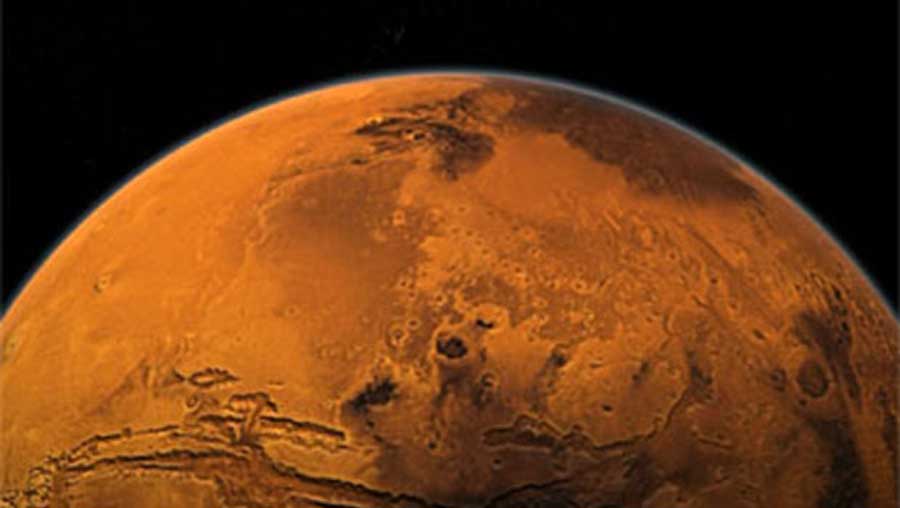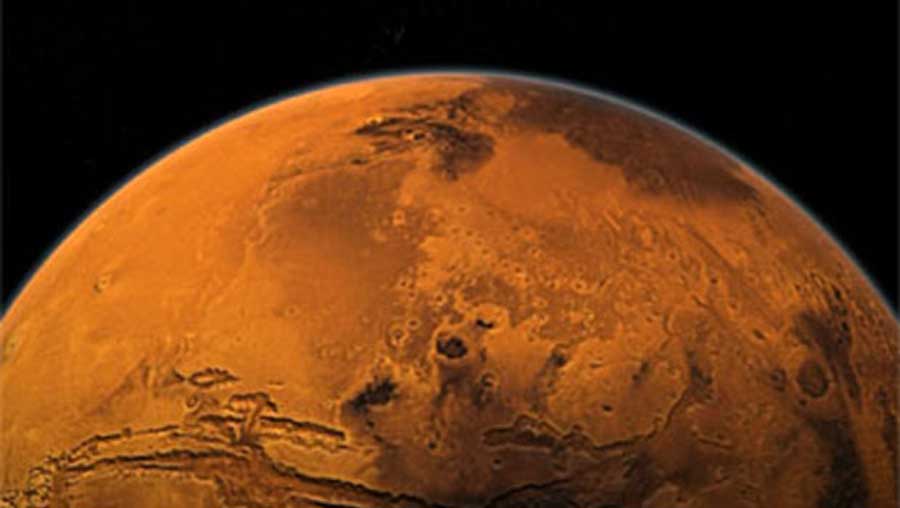Mars reaches a point in its orbit called opposition March 3, allowing for some of the best views for years. At such times — which occur 780 days apart (minus 1 hour, 26 minutes, and 24 seconds, to be exact) — the Red Planet is number one on the minds of astronomers. Opposition is when Mars, as seen in our sky, lies opposite the Sun. It rises at sunset, climbs highest at midnight, and peaks in brightness for the year.
But every opposition is not the same because the orbits of Earth and Mars are not circular. During a distant opposition, Mars can be more than 60 million miles (97 million kilometers) away. Contrast that with a nearby opposition that places Mars less than 35 million miles (56 million km) from Earth.
On March 3, the Red Planet lies 62.6 million miles (100.8 million km) from Earth. It measures just 13.9″ across at opposition before dropping to 12.7″ by the end of March. Unfortunately, that means this year Mars will only look as big as a U.S. quarter 1,115 feet (340 meters) away. And it’s that small disk that earthly astronomers — using telescopes of every size and variety — are magnifying to reveal surface and atmospheric details.
But you don’t need a telescope to see Mars this month. In fact, even from the brightest city, you can spot the planet on a clear night with just your eyes. When searching for Mars, keep a couple things in mind. First, during this opposition, after sunset the Red Planet is the fourth-brightest starlike object overall, but the brightest one in the eastern part of the sky. Second, Mars appears copper or whitish-orange in color, not a deep red. For centuries, Mars has been called the Red Planet because of iron compounds in its soil and rocks. During opposition, however, the planet is too brilliant to be red.
Veteran planetary observer and Astronomy magazine Contributing Editor Raymond Shubinski says, “If you use a telescope to view Mars, remember that it’s now late spring in the planet’s northern hemisphere, so that part of the globe tips in our direction.”
Observers should have a good view as the north polar cap shrinks under ever-stronger solar radiation. Most other surface features appear as dusky markings. “The best views come when the planet lies highest in the sky around midnight,” Shubinski says, “because that’s when we see it through the least amount of our image-distorting atmosphere.”
At opposition, Mars shines at magnitude –1.2 in the southeastern part of the constellation Leo the Lion. It then heads west-northwest toward the Lion’s brightest star, 1st-magnitude Regulus. The planet ends the month about 5° shy of that target while glowing at a still-impressive magnitude –0.7.
Mars will not appear this big or bright again until its next opposition April 8, 2014.
For the most up-to-date information and the best pictures from this month’s appearance of Mars, be sure to check out Astronomy magazine and www.Astronomy.com/readergallery.
FUN FACTS ABOUT MARS
- From Mars, the Sun appears 44 percent as bright as it does from Earth.
- Mars has a total of 1,345 named features, of which 845 are craters.
- Earth is 9.3 times as massive as Mars.
- During the 19th century, astronomers referred to supposed inhabitants of Mars as “Martials.”
- Video: Tour the solar system: Mars, with Liz Kruesi, associate editor
- StarDome: Locate Mars in your night sky with our interactive star chart.
- The Sky this Week: Get your Mars info from a daily digest of celestial events coming soon to a sky near you.
- Sign up for our free weekly e-mail newsletter.












